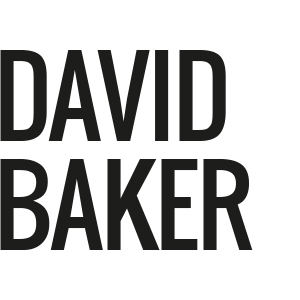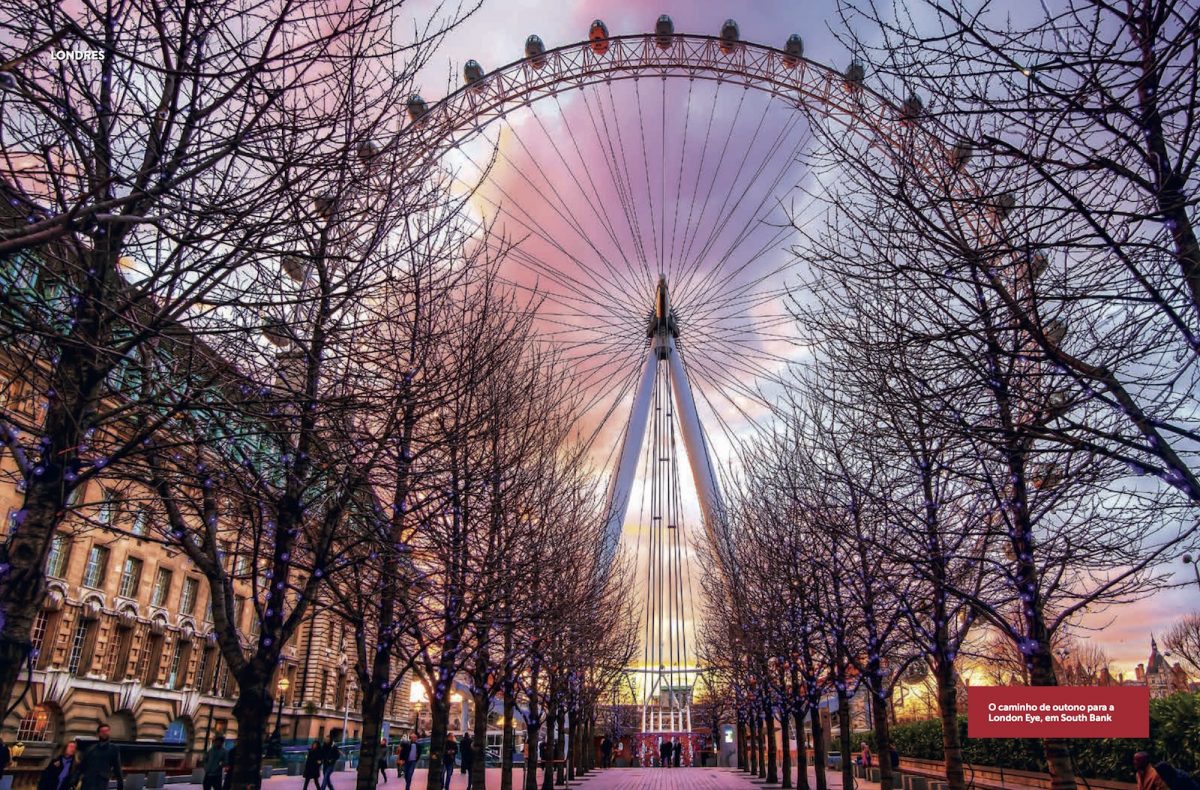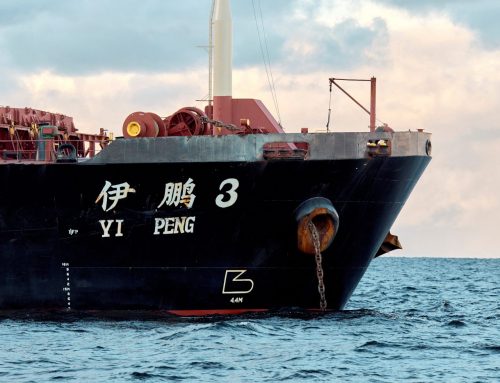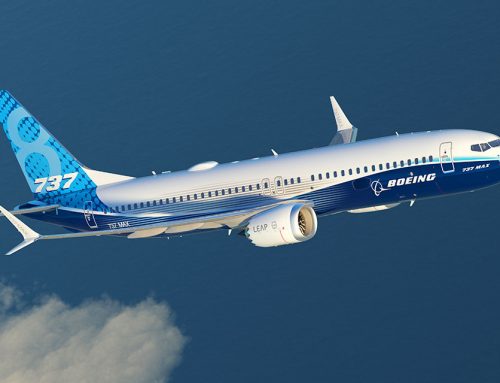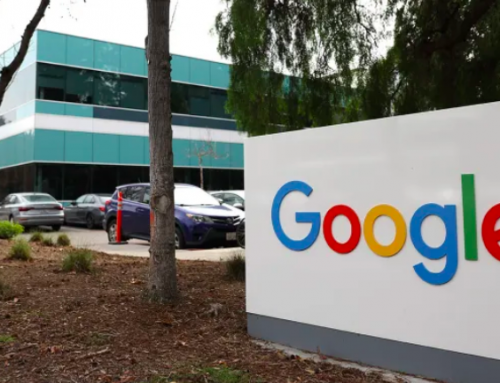A personal take on the greatest city in the world
Viagem Brazil, June 2015
(originally published in Portuguese)
Wherever I travel, I am always pleased to come back to London. Unlike New York, which demands of its visitors a sense of purpose, or Paris, which wears its prettiness self-consciously, London is like an old friend or a comfortable sofa, pleased to see you, happy for you to fit in just as you are.
My home now for 28 years, London is a city for everyone. Jump on a bus and you can hear ten languages being spoken. Wander the streets of Kensington and Chelsea and you are awestruck by the wealth and elegance of the houses. Fight your way through the crowds at Ridley Road market in Hackney and you are elbow-to-elbow with some of the poorest people in Britain, haggling over cassava and beans to get the best deal for their family in one of the nearby council tower blocks.
I live between these two locations, geographically and socially, at The Angel, in the Borough of Islington. The Angel is known to many Britons as one of the cheapest properties on the Monopoly board. And indeed, when Monopoly was launched, this area was, in effect, a slum. The canal that runs through it – today a lovely walk past barges selling coffee and second-hand books – was then the source of rats that made their way up into the houses, crammed full of people living head to toe, houses that today cost more than £2m.
It is named after a pub, The Angel Inn, that stood here for centuries, providing travellers from the north with their last night’s accommodation before the old city gates opened and admitted them to London proper. The pub has long gone (though there is a Starbucks near where it used to be) and the city gates exist only in the names of nearby streets – Moorgate, Bishopsgate, Aldersgate – and by the fact that the area they guarded is still known as the City of London, or, more commonly, just “the City”.
But The Angel still has a feel of rest and relaxation about it. Sadler’s Wells theatre (Rosebery Avenue, London EC1R 4TN, 0844 412 4300), which is a stone’s throw from my house, is now London’s leading dance venue. But it began when this area, now almost at the dead centre of London’s 1,500 sq km, was little more than fields. As with so much in London, its name tells its story. A Mr Sadler built a pleasure garden here around some natural springs (“wells”) where Londoners from the grimy city, just 2km further south, could come for fresh air and some pleasant bathing.
Upper Street, The Angel’s main thoroughfare, has been a place for eating, drinking and having a good time since at least the early 19th century, when London’s expansion filled the fields with the elegant squares and streets the district is now famous for. Today a new restaurant opens here almost every week – though not the flashy, go-to-be-seen places of the West End, nor those foodie meccas, hard to get into and in all the Sunday magazines, that capital cities seem to spawn.
Here, we have smaller venues where good food is served with a good attitude. A quick glance from upstairs on the 19 bus, and you can count off restaurants serving Turkish, Italian and French cuisine, Spanish tapas, fish and chips, curries, Afghan dishes and German sausages. And that’s before you have even got halfway up the street. There’s even a churrascaria, the Rodizio Rico (77-78 Upper Street, London N1 0NU). I’m sure it’s great. London has tens of thousands of Brazilian residents and some of them must know how to cook meat. But I have always steered clear, just as I have only been once to the Irish pub in Rio de Janeiro. Some things should be experienced in their home location.
The other business that thrives in Upper Street is estate agents, for this is an area of spectacularly beautiful houses that, in the insane property boom that London is currently experiencing, sell for eye-watering prices. The architecture of the area is Georgian, which means that it was built roughly in the reigns of Kings George I to IV (1714 – 1830). England’s architecture at that time drew heavily on classical styles, and houses had a strict set of proportion about them that harks back to Greece and Rome.
But these houses – head west down almost any side street off Upper Street to see what I mean – were not built by scholarly architects fresh from the Academy. They were put up by developers and bought, like new-build condos the world over, off-plan. At the Islington Local History Centre (245 Saint John Street, London EC1V 4NB, 020 7527 7988), you can see the brochures that developers issued to tempt first-time buyers, who could often personalise details such as the patterns on their wrought-iron balconies or in the fanlights over their front doors. (Coachmen in those days were often illiterate and they used the different fanlight designs to tell which house was which.)
These original residents were not rich. They were middle-level clerks or shopkeepers and, with one or two servants, would have a house to themselves. Today, space is at much more of a premium – the fields are long gone and the edge of London is now 20km further north – and my whole flat, on the first floor of one of these elegant houses (built in 1810), is what used to be a family’s living room.
There are many glimpses of the lives these original residents of The Angel used to live. In some of the side streets the tarmac has worn away to reveal cobblestones. The local authority has replaced the modern street lamps with replicas of the gas lights that lit the streets 150 years ago, primarily to catch the eye of location scouts – the area is often used for filming – but also to blend in more with the architecture around them. And look down, and on the pavement, stepped over and ignored by thousands of Londoners every day, you’ll see small, metal discs, about 40cm across, and marked with patterns, symbols and sometimes a company name. These are the coal-hole covers, through which merchants delivered coal to each house from a horse-drawn carriage.
Upper Street leads to Highbury – though on your way take a look at the Union Chapel on the right (Compton Terrace, N1 2UN, 020 7226 1686), on Sunday a church, the rest of the week a quirky and strangely beautiful music venue with an adventurous list of artists. London is a city of villages and landed estates, long gobbled up and overrun by urban sprawl, but still known by their names and many still with a parish church and village green. Highbury used to be a nobleman’s estate and Highbury Fields, bounded on one side by some very elegant houses from the late 18th century, is what is left of it, and a great place to have a picnic in the summer.
But the area is best known as the home of Arsenal FC and on match days you can mix with the club’s famously benign fans (football violence is a thing of the past here) on their way to the Emirates Stadium (Hornsey Road, London N7 7AJ, 020 7619 5003) just up the road. There are tennis courts here you can rent time on and a pretty row of shops, along Highbury Park, including one, La Fromagerie (30 Highbury Park, N5 2AA, 020 7359 7440), where you can buy some of the best cheese in London.
Islington is a hugely diverse part of London. Thanks to bombing during the second world war and, later, to the policies of its famously left-wing local government (when I moved here in 1986 it was known, not entirely jokingly, as the People’s Republic of Islington), its elegant terraces sit cheek by jowl with blocks of social housing. I like this immensely, as it is almost London in microcosm. Go to Chapel Market (Tuesday to Sunday, N1 9EZ), at the bottom end of Upper Street near Angel underground station, and you will be pushing through people of all levels of wealth and class being served by stallholders born in London, France, Spain, Somalia or Afghanistan. (And while you are there, don’t miss the junk shop on White Conduit Street, just off the market and crammed full of secondhand items, from stuffed foxes to Victorian crockery sets. Bargain hard, though. Clara, the owner, may look innocent but she has a strong sense of business.) My own street has millionaire businessmen and unemployed families living side by side.
Islington developed this sense of bohemian mixing in the 1970s when artistic types, looking for somewhere to settle down, started to buy the run-down houses in Highbury and along the side of the canal, and do them up. Many of the people who live here still have a slightly rebellious view of authority and a commitment to making the world a better place – there is a huge amount of voluntary work done here, for example – though now that is starting to change. I am not sure why this is. It could be that the only people who can afford to move into the area now are the very well paid. Or it could be that the country as a whole is becoming less community-minded. I’m not sure, but if it’s the latter, it will be a huge loss for Britain.
The Angel is bounded to the east by Dalston and Hoxton, London’s hipster areas, and to the south and west by Clerkenwell and King’s Cross. When I first moved here, none of these places were remarkable except for the slight possibility that you could be quietly mugged walking through them late at night on your way home from a club. Today they are vibrant, confident and fun places to hang out, all thanks to a very boring but significant piece of government regulation.
Property in Britain is tightly regulated. Many buildings are “listed”, which means you can do almost nothing to them without permission from a government department, and almost all are limited in their use: residential, industrial, commercial and so on. For many years, Clerkenwell was the watchmaking and printing district of London, as well as home to an enormous gin distillery. When these industries moved out to bigger spaces on the outskirts of the city, their factories and warehouses were left empty. When I first moved here, you could walk down St John Street, the main road between the Angel and the City, at the weekend and not see another person.
Then, in the late 1980s, the law was relaxed to allow property owners to turn industrial buildings into offices and homes and London’s loft-living culture was born. St John Street now is an interchanging tapestry of cool apartments and advertising agency offices. And, at its southern end, is a restaurant, St John (26 St John Street, EC1M 4AY, 020 7251 0848), which finally lays to rest the idea that British food is no good. There, the menu is all pheasant, grouse, pike and oysters, standards that would have fed Britons for centuries. And it makes a plum pudding that stops you in your tracks. Book early – it gets busy – and be prepared to pay, but treat yourself to some truly native cooking. To eat lamb, duck or ox cheek here is the equivalent of eating moqueca in Bahia.
St John Street is bounded at one end by Exmouth Market, a delightful pedestrian street with yet more restaurants and cafés. Try Moro (34-36 Exmouth Market, EC1R 4QE, 020 7833 8336) for superb Andalusian cuisine or Caravan (11-13 Exmouth Market, EC1R 4QD, 020 7833 8115) for a hearty brunch with excellent coffee. At the other end is Smithfield Meat Market (225 London Centre Markets EC1A 9LH, 020 7332 3092). For more than 800 years, Smithfield has been the centre of London’s meat wholesale trade. Until well into the 19th century, cattle were driven here down Upper Street to be slaughtered and, although the killing is now done discreetly out of town, the market is still where the capital’s butchers and restaurateurs go to buy their meat. (At the lower end of Upper Street, you can still see the raised pavement built to keep pedestrians out of the muck produced by the cows being herded south to their doom.) The market operates in the early hours. Go before 7am if you want to see it in full flow and be prepared for blood, bones and hanging carcasses. You can buy your Sunday roast or some sausages in any of the little butchers that are dotted around the edge.
To the west of the Angel is King’s Cross, known primarily for the huge railway station from where trains run to the north and on to Scotland. Britain’s train network is safe, efficient and extensive, though finding the best-value ticket is a challenge since the whole thing was privatised, resulting in a mish-mash of competing companies with a bewildering variety of fares. (Ask a local to help you or go online to nationalrail.co.uk.) Like many railway termini, the area around King’s Cross used to be rough and seedy. Argyle Square, just south of the station, was famous for its neo-Nazi skinheads.
But those days have long gone thanks primarily to the re-emergence of St Pancras station next door. St Pancras is where the Eurostar trains depart for Paris and Brussels, crossing to France through a 50km tunnel under the English Channel. It’s hard to describe the effect the opening of the Channel Tunnel, as it is known, had on Londoners. Long part of the European Union, Britons still felt detached from the goings-on in the mainland part of the continent. “Europe” was where you went on holiday. Now you can travel from the centre of London to the centre of Paris in 2.5 hours and, for those of us who like the idea of being European (and there are plenty of Britons who don’t), London feels more continental and less stuck on the edge of Europe, with half an eye to its Anglo-Saxon compatriots over the Atlantic.
When the Eurostar service began, it used to offer what it called a “Clubbing Return” ticket to fill seats on some of its emptier trains. For hardly any money – I think it was about £20 – you could leave London after 4pm on a Saturday and return on one of the earliest trains the following morning, bleary eyed and exhausted after a night on a Parisian dancefloor. This offer seems to come and go, perhaps depending on how puritan the company’s ticketing officials are feeling, but it’s worth checking the Eurostar site (eurostar.com) for special offers. At any time of week, as long as you book well in advance, you can go to Paris and back for about £60. There is also a superb website, seat61.com, which shows you how to get by train from London to almost any other destination in the world.
Back at St Pancras, take a peek inside the St Pancras Hotel (St Pancras International, Euston Road, NW1 2AR, 020 7841 3540), for a long time derelict and abandoned but restored to its Victorian splendour when the station became London’s Eurostar terminal. It’s very unpopular to say this, as Londoners are proud of this extravaganza of Victorian Gothic architecture, but I don’t much like the building. I think it is too fussy and overwrought. However I’m in a minority of about one and even I think it’s a nice place to wander around inside. The restaurant opens out on to the platform where trains to Europe wait to depart, though nowadays, of course, you can’t just pop out and get on board. There’s a labyrinth of passport and security checks downstairs to go through first.
Getting around London, in contrast to many big cities, is a joy. Don’t listen to anyone who says you need a car. Traffic is often slow – though São Paulo residents will feel they are at Le Mans – but public transport is superb and safe. For short journeys in the centre of the city you can rent a bicycle from one of the many Santander automatic rental stations dotted around the streets (£2 per day, though each journey must be less than 30 minutes, go to tfl.gov.uk and look for “Santander Cycles” for a map and more details). These bikes are universally referred to as “Boris Bikes”, after the charismatic and right-wing mayor of London, Boris Johnson, who introduced them.
This was a shame, not only for the first sponsors of the scheme, Barclays bank – who hoped their name would be on everyone’s lips and have now pulled out to be replaced by another bank, Santander – but also for Ken Livingstone, Johnson’s extreme-left-wing predecessor, who thought up the idea. Johnson is being talked about as a future prime minister of Britain and, if or when that happens and the bikes are on their fourth or fifth sponsor, the chances are that the scheme will still have his name. Alliteration is a powerful thing, as Barclays were hoping, but somehow the name of a bank, after our disastrous financial crash, is not what many people want on their lips.
If cycling is too scary – and it does require sticking to quiet roads and using your wits – jump on the underground (known universally as “the tube”) or on a bus. Unlike many Brazilian cities, buses here are safe for everyone and drive at a normal speed. They don’t take cash so you will need an Oyster Card, which you buy at any underground station and top up with money. Since London introduced a congestion charge in 2003 to reduce the amount of traffic in the city centre, buses run smoothly and on time and it’s a treat to sit upstairs and see the city go by. London’s famous double-decker buses with an open platform at the back that you could jump on and off were phased out a few years ago for safety reasons. But the outcry was so huge that they are returning, in a new, modernised design, on some routes, including the 38, which runs through Islington into the West End and beyond.
To see London’s regeneration in action, head north from King’s Cross to where the canal from Islington emerges from a tunnel and snakes its way towards Camden and the west. This used to be a strange no-man’s-land of broken down railway warehouses and empty gasometers. It is now home to Central St Martins School of Art (Granary Building, 1 Granary Square, N1C 4AA, 020 7514 7023), some very cool restaurants and apartments and a great open space that soon (perhaps by the time you are reading this) will include an open-air swimming pool. But for me, much more interesting is the area south of St Pancras, where a series of remarkable squares take you down towards Oxford Street.
This is Bloomsbury, at the beginning of the 20th century home to the eponymous group of writers and artists that centred around Virginia Woolf and EM Forster. Today it is mostly taken over by the University of London. Check out the university’s rather severe Senate House building (Malet Street, WC1E 7HU), on which George Orwell based the Ministry of Truth in Nineteen Eighty Four. Nearby is the London branch of The School of Life, where I teach (70 Marchmont Street WC1N 1AB, 020 7833 1010), and some excellent secondhand bookshops, the best being Skoob books (66 Brunswick Shopping Centre, Marchmont Street, WC1N 1AE, 020 7278 8760). But the real interest here is the British Museum (Great Russell Street, London WC1B 3DG, 020 7323 8299), easily the best museum in London and completely free to go into.
The British Museum starts on the south-west corner of Russell Square and, on your way, it’s worth diverting to the square’s north-west corner for proof that Britain’s aristocratic feudal heritage is still able to flex its muscles. The modern brick building you see here is part of the university’s School of Oriental and African Studies, but the land it is built on belongs to the Dukes of Bedford, whose family name is Russell (hence the square). When the building was completed in 1995, it turned out that the university had built it without the Russell family’s permission and, technically, could be made to pull it down. Instead, the family demanded that a stone plaque be attached to the wall facing the square apologising for the university’s lack of respect. I always smile when I pass it. Britons use the word “sorry” hundreds of times a day – we’re probably still a bit self-conscious that our grand empire has disappeared – but this is the only apology I can think of that is literally set in stone.
The British Empire is the source of almost every object in the British Museum and there are few museums in the world that can give you such an impressive overview of the achievements of the human race. Because it’s free, the best way to visit it is to pop in, see two of three things and come back another day for more. Everyone has their favourite exhibits and while most people go there to see the famous Parthenon frieze, which Greece is still angling to have back, I prefer the Assyrian section, where sculpted reliefs from the sixth century BC tell the story of a majestic, royal lion hunt, as well as the art from pre-colonial Africa in the museum’s basement.
As you wander through the museum, pause in the central open area, which has a cylindrical space in the middle for special exhibitions. This used to be the British Library’s famous Round Reading Room, until the library moved to new premises near St Pancras Station. This was the intellectual centre of London for more than 100 years and was used by a huge number of famous names, including Karl Marx, Mahatma Gandhi, George Orwell, George Bernard Shaw and HG Wells. The new library’s reading rooms are more comfortable but older users of the library (including me) have a fond nostalgia for the old reading room’s perpetual smell of dust and polish and the strange echo of coughs, pages turning and pencils scratching on paper that provided the soundtrack to whatever you were researching.
If you leave the British Museum by its back entrance and turn left, you will find yourself on Bedford Square, one of the finest squares in London, originally a series of majestic family homes and now some very fine offices. The only shame is that, contrary to London’s general sense of openness, you can’t go into the garden in the middle. It’s reserved for keyholders who live and work in the surrounding buildings. From the square, you can head south to Soho and the beginning of the West End.
No Londoner will voluntarily walk down Oxford Street and many have clever short cuts that help them avoid this annoying and overcrowded stretch of noisy shops. But south of Oxford Street is Soho, which is very much worth wandering around.
When London was a walled city, the royal family lived where Westminster and the Houses of Parliament now stand and Soho was used a royal park for hunting. (The name “Soho” is, according to some, an imitation of a hunting cry.) By the 17th century, this part of town was inhabited mainly by Huguenots fleeing persecution in France and there is a beautiful Huguenot church in Soho Square. But say Soho to any Londoner now and they are likely to reply “sex”, as, since the 20th century, this has been London’s dirty playground. When I travel in Brazil, I am always struck by the motels – Eros, Kiss, Venus – that provide a refuge from family life for amorous couples, and, for a long time Soho provided the same function for Londoners. Coming into its own in the swinging Sixties, the time of The Beatles, flower power and hippy revolution, Soho, thanks to its Italian residents, gave the city its first cappuccinos (known then as “frothy coffee”), late-night illegal drinking dens and grimy upstairs brothels.
For decades Westminster Council, which runs this part of London, tried to clean the area up, but it held on, becoming, briefly, a gay mecca until London’s homosexuals (of which I am one) discovered the greater joys of cavernous clubs south of the river in Vauxhall. For the past few years it has been resolutely sticking a red-lit finger up at the po-faced bureaucrats from the town hall, but, now, Soho’s seediness is receding, defeated not so much by morality (Londoners don’t really care what people do in bed) but by rising rents. This is prime land in the middle of an expensive city and, as the bars and the prostitutes are both finding, it’s hard to compete with cheaper drinks bought in a supermarket and casual pick-ups arranged online. You can get a sense of (the cleaner side of) Soho’s bohemian past at the wonderful Maison Bertaux tea shop (28 Greek Street W1D 5DQ, 020 7437 6007, go upstairs and treat yourself to real English tea and French patisserie), the Algerian Coffee Stores (52 Old Compton Street, W1D 4PB, 020 7437 2480), which has been selling an amazing range of loose tea and coffee since 1887, and Lina Stores (18 Brewer Street, W1F 0SH, 020 7437 6482), one of the last remaining Italian delicatessens in an area that brought Italian food to London. There have been various attempts to retain Soho’s bohemian seediness but, sadly, they are doomed. Go now before the last prostitute is ousted to be replaced by yet another advertising agency.
London is a busy city, though its bustle is never oppressive like New York’s, but even modern-day Londoners need some time off from the buzz. For me, that means going to Hampstead Heath and, in particular, to a stretch of natural water called Highgate Men’s Pond.
Hampstead Heath (accessible via Hampstead underground or Hampstead Heath or Gospel Oak overground stations) is the kind of place that couldn’t exist in the Brazilian cities I know (it would be a favela): a broad expanse of open countryside in the middle of a city. About half an hour by bus or underground north of King’s Cross, the Heath is 320 hectares of rolling hills, copses of mature trees, scrubby bushes and three cold-water ponds (one for men, one for women and one mixed) where, for centuries, Londoners have gone to swim, flirt and enjoy the fresh air this high ground enjoys.
I started swimming in the men’s pond (Millfield Lane, N6 6JD) almost as soon as I arrived in the city. During the summer this is a favourite spot for gay men and Orthodox Jews and the two groups blithely ignore each other as they splash through the brown, slightly brackish water, distinguishable only by their choice of swimwear (Speedos vs shapeless nylon trunks) and body shape (the gay guys tend to see more of the inside of a gym).
A few years ago I started to swim here in the winter, too, and I became part of a slightly eccentric group of people who feel a buzz from jumping into water that often is only just above freezing. And buzz is the word. Nothing can describe the exhilaration of coming so closely into contact with nature. You share the pond with ducks and moorhens and, as the year progresses, you can watch the trees mark the seasons, from the lush buds of spring to the bare branches of London’s grey winters.
But the real beauty of the men’s pond, and why it is my favourite spot in the whole of the city, is the sociability of the people who go there. One December morning a few years ago, three of us (we had met at the ponds before) were drying off after a particularly icy swim, commenting jovially on the temperature as the steam rose from our naked, pink bodies. And then I did a little double-take. One of the people I was talking to was a labourer who was often down on his luck. I think he lives in a tiny bedsit in one of the least fashionable parts of London. The other a member of Britain’s supreme court. I can’t think of any other place in the world where the three of us would be chatting as equals. But here, stripped down, literally, to our basic humanity, we discovered a common bond. Highgate Men’s Pond is a magical place and every time I go there I realise why London is, quite simply, the best city in the world.
